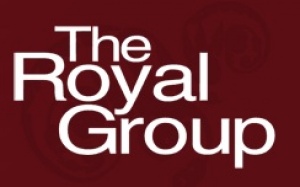Cambodia’s Royal Group unveils master plan for visionary development of Koh Rong

The Royal Group of Cambodia has unveiled its visionary Master Plan to transform the pristine island of Koh Rong into Asia’s first environmentally planned resort destination.
A 6-month study by MAP Architects of Hong Kong and environmental consultants Scott Wilson produced the exciting vision for “one of the last undiscovered paradises in South-East Asia”.
Focusing on high quality, sustainable tourism, it details how the “next Asian Riviera” – following Phuket, Koh Samui and Bali – will be created from scratch.
The study was commissioned to “transform a vision into physical reality”, said MAP Architects Director, David Clarke. It embraces every aspect from infrastructural development of an airport, marina, port and roads to proposed locations for resorts, hotels, golf courses, shopping, restaurants, bars and entertainment.
Setting an exciting new benchmark for tourism worldwide, the Master Plan also lays down strict guidelines for sustainable development of the “first environmentally planned resort island in Asia”.
ADVERTISEMENT
The Master Plan is now being distributed to international investors, developers and leading hotel and resort operators to establish partnerships in one of the most unique and boldest tourism projects ever envisaged.
With a 5-year timetable for the first phase, and ultimate completion in 25 years, it is also one of the most far-sighted of visions in global hospitality.
Despite its long-term outlook, the project is attracting worldwide interest.
“Some of world’s top resort operators and 5-star hotel groups are already eyeing early progress with keen interest,” said Mr David Simister, Chairman of CBRE Thailand, the exclusive advisor and sole agent for developing the island. “They see it as the next big opportunity in a world where quality tourism development options are shrinking. Since the project is balancing ecological protection with minimum carbon footprint, we are targeting forward looking investors within the region and globally who share a mutual vision on ecological development and who want to be part of creating Southeast Asia’s new resort destination.”
“Key to the eco-strategy is that all development partners conform to recycling and low-energy use, with minimal use of high-energy consuming materials”, said Mr Clarke. Even colour schemes of various integrated projects are being restricted – to “an eco-green theme with earth tones”
The Master Plan has identified locations for a range of 3-star to 5-star properties. “Although the island is mostly a luxury destination, there will be something for everybody,” said Mr Clarke.
An international airport in the centre of the island will allow international flights by aircraft such as the A320 Airbus, operated by charter airlines and carriers like Air Asia, Thai Airways and Bangkok Airways. Koh Rong is less than one hour’s flight from Bangkok and HCMC, and approximately two hours from Hong Kong and Singapore, making it ideally located to capture the growing Asian tourist market and global travelers.
A working seaport will service ferries, equipment and supply shipments, and roll-on, roll-off operations.
A separate marina will accommodate pleasure boats, yachts and cruise ships, with a boardwalk of boutiques, restaurants, bars and guesthouses.
Three golf courses are ultimately envisaged in the long-term, with the initial phase of development planned to include a small 9-hole option.
To meet demand for fresh water, environmental consultants Scott Wilson explored a number of options – from small reservoirs and dams to tapping spring water from a deep aquifa well beneath the island. “It will also be compulsory for developers to trap rainwater on their roofs,” said Mr Clarke.
The sustainability vision extends to organic farming and fish-husbandry projects to meet much of the island’s demand for food produce – and provide employment for the island’s indigenous fishing community, estimated at around 300 families.
This includes the possibility of an international university-style educational project dedicated entirely to environmental sustainability.
“The master plan for Koh Rong presents perhaps a unique opportunity to create virtually from the beginning a truly ecologically sustainable large scale resort community,” said Lauri Van Run, General Manager for Scott Wilson, who headed the environmental survey.
“Now we need to sell this island to the world, with an established brand to realize the dream,” added Mr Clarke.
Decades of isolation has left Koh Rong a preserved, pristine wilderness unrivalled in the region.
Koh Rong features an abundance of natural attractions including coral reefs, tropical palms, rainforest, waterfalls, sparkling turquoise waters and 28 pure white sand beaches – including one of the most spectacular in the region stretching 6 kilometres.
The Royal Group, one of Cambodia’s largest corporations with substantial interests in property and infrastructure development, has been granted a 99-year lease by the Cambodian government to develop Koh Rong.
The eco-model for Koh Rong is the vision of its tycoon chairman Kith Meng who said “Our national tourism to Siem Reap is well developed with world famous Angkor Wat, but the potential of the country’s beautiful coastline is the missing link in the overall development of Cambodia’s tourism.”

